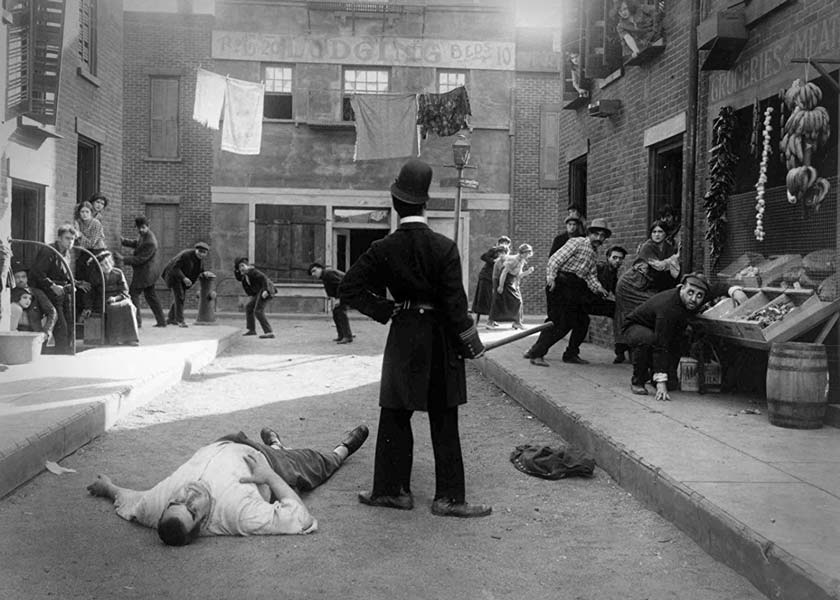Synopsis
A minister and The Mission Worker (Purviance) inspire The Derelict (Chaplin), to reform and get a job. He becomes a policeman on Easy Street. When The Derelict arrives, poverty and violence dominate the street. Families do not have enough to eat. Trash lays all around, and men fight and grope for a few coins. The denizens of Easy Street, especially the gigantic Bully (Campbell), have beat up every policeman who comes on the street. By means of dexterity and resourcefulness Charlie overcomes the Bully and turns him over to the police.
The Bully soon escapes, and after a battle with his wife, attacks The Derelict. The low-life denizens of the street lock The Mission Worker in a cellar with a drug addict, who menaces her. After Charlie overcomes The Bully (with the aid of a small stove), the street criminals throw him into the cellar. He lands on the addict's hypodermic, and the drug stimulates him to extreme efforts. His manic activity enables him to pound his attackers senseless, overcome all the unsavory denizens of the street, and save The Mission Worker. The combination of The Derelict's force and the minister's forgiveness bring hope and peace to Easy Street.
In the final scene, the street and everybody who lives on it are clean and tidy. The neatly dressed Bully and his wife walk amicably to the Mission. Arm in arm The Derelict and The Mission Worker follow them into the church.
Discussion
By 1916, Chaplin had established the appearance and basic personality traits of his famous Tramp character. The Tramp's escapades involve him in funny and touching situations. The fun of Easy Street is in the comic battles between The Derelict and The Bully, a caricatured huge, strong, and threatening villain. Eric Campbell, playing The Bully, was considerably taller and wider than Chaplin, making him all the more intimidating. Chaplin's acrobatic abilities are displayed as he runs, turns, ducks, crawls under a bed, and slides down a drainpipe to escape and finally overcome The Bully.
The action in Easy Street culminates with the touching physical and spiritual transformation of not only Easy Street and its inhabitants, but also of The Derelict himself. The presence of drug addiction in the film may seem surprising, but in the mid 1910s drug use was an acceptable source of comedy, as evidenced by this film and Douglas Fairbank's The Mystery of the Leaping Fish (1916). In the latter film, Fairbanks plays a cocaine addict who leaps about in a frenzied fashion after he accidentally injects himself.
Further Reading

